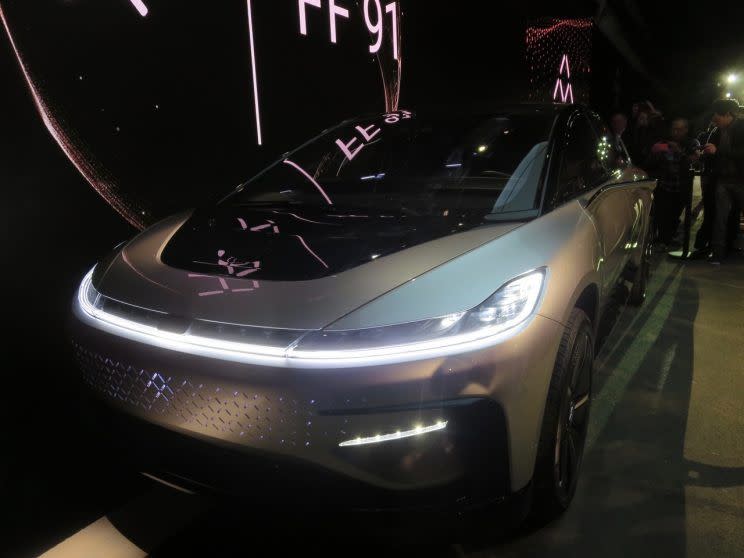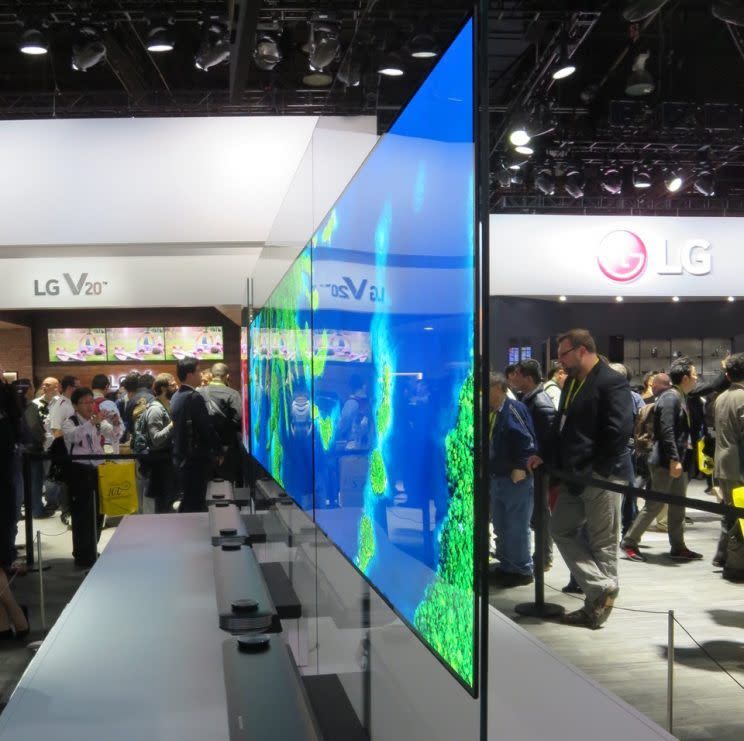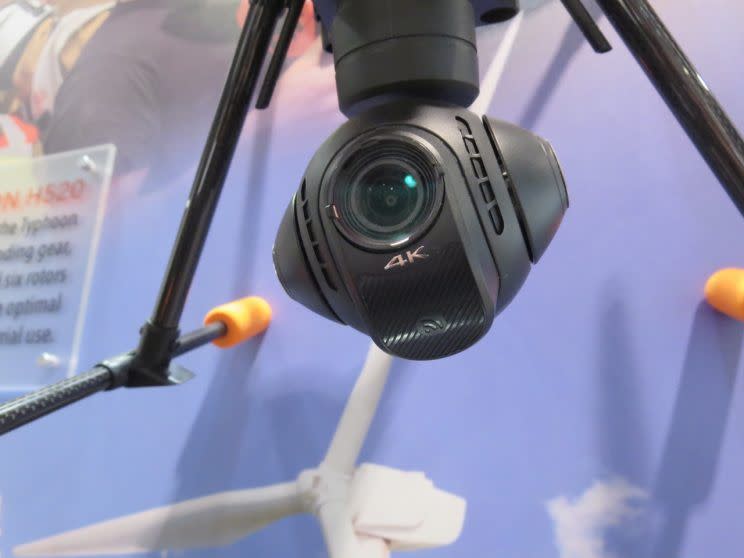How the hottest gadgets from CES 2017 panned out

At CES, companies try to sell products that, in some instances, turn out to be disappointments. It’s not easy bringing a new gadget to market — especially if you’re competing with entrenched incumbents or trying to take a technology to some new level.
Here are a few companies that exhibited at CES last year that have struggled to launch a product that has taken off.
Faraday’s future looks further away
The most ambitious debut at CES 2017 was the FF 91 — an electric, autonomous supercar from a company named Faraday Future. At an unveiling near downtown Las Vegas, Faraday Future executives touted the vehicle’s 358-hour range and its 2.33-second 0-60 time and bragged that the Chinese firm was “reformatting the future of mobility,” whatever that means.
Since then, a few wheels have come off the Faraday Future bus. The firm’s plans to build a new factory northeast of Las Vegas ended this summer, when it terminated that project in favor of leasing an existing factory in Hanford, Calif. It’s since written the state of Nevada a check for $16,000 to pay back the tax abatements it had received so far on a $335 million incentive package.
Meanwhile, a series of high-ranking executives have left the company, and its parent firm LeEco now faces a massive cash crunch.
At this year’s CES, Faraday Future plans to unveil a new SUV. We wouldn’t rush to put down a deposit on that just yet.
Potential problems for video
One of the most talked-about TVs at CES 2017 was LG’s W (as in “wallpaper”) line of Ultra High Definition sets. With screens just under a quarter-inch thick, these OLED (organic light emitting diode) models could be stuck on a wall as if they were wallpaper.
But the unannounced price of the 77-inch model turned out to be $14,999, a steep premium over the 65-inch W TV that sells for a mere $7,999.
For customers not willing to pay a five-figure price for a new UHD TV, the more relevant news at CES 2017, and since then has been the continued erosion of prices for sets based on cheaper LED-backlit LCDs. TCL not only brought a 55-inch UHD TV to the market for $500 but introduced 49-inch and 43-inch versions for $420 and $370, respectively.

At those smaller sizes, the extra pixels of UHD — four times the resolution of mere HDTV—will go unappreciated from the average couch. But the wider range of color and brightness delivered by their support for High Dynamic Range (HDR) video, a once high-end option for UHD that is now becoming a standard feature, should still be readily apparent even on a smaller display.
Those TCL sets also incorporate Roku’s streaming-media player, which ended the year looking like an even better option after the latest in a long series of spats between Google (GOOG, GOOGL) and Amazon (AMZN) led the e-commerce giant to block YouTube from Amazon’s Fire TV players.
Drones dodge a registration rule — for a while
The flocks of drones shown off at CES last year got an unexpected boost from a court ruling in May that held that the Federal Aviation Administration’s drone-registration system exceeded its authority. With that shut down, owners of drones weighing more than about half a pound no longer had to fill out a form on the FAA’s site and pay a $5 fee to operate.
That also meant that manufacturers of the lightest drones no longer had an edge because they could not advertise their hardware as being registration-free.

But that quickly changed again, when a funding bill, signed by President Donald Trump in December, authorized the FAA to renew its registration regime — part of its ongoing program to get drone owners to see themselves as pilots who think of other users in the air.
That remains a worthy goal, since full-fledged pilots continue to report drones coming close to their aircraft. In September, one collided with an Army helicopter between Brooklyn and Staten Island. That UH-60M landed safely, after which maintenance technicians found a piece of the DJI drone stuck in one of the helicopter’s rotors; DJI then matched that against sales records to identify the owner.
Meanwhile, the most ambitious drone on display at CES — the eHang 184 passenger-carrying aircraft — saw test flights commence in Dubai, where the government has opened the skies to such research. But since these flights involved no people on board and ground control of the vehicle, it’s too soon to start counting down the days when this or other pilotless sky taxis will offer any relief from CES traffic.
More from Rob:
What to expect from CES 2018, the biggest gadget show of the year
Your pay-TV rate might be increasing — here’s what you can do about it
2018 tech forecast: Expect more angst about privacy and net neutrality
Email Rob at [email protected]; follow him on Twitter at @robpegoraro.
